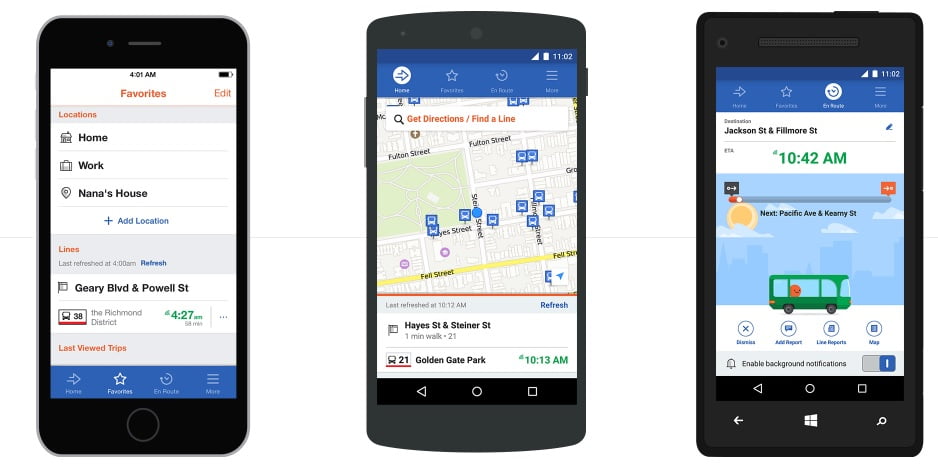Israeli app Moovit, which provides real-time information on the fastest public transportation routes (buses, trains and underground), has launched an Olympics app in Rio de Janeiro, which expects over 500,000 visitors to attend the August 2016 Games. This news comes on the heels of an announcement that the Israeli startup – which is dubbed “the Waze of public transportation” – will add real-time information on Uber taxis in 131 cities, starting with 22 major North American and European cities.
SEE ALSO: David Vs. Goliath? Inside The Gett-Uber Battle Over Mobile Taxicab Services
While the partnership with Uber doesn’t immediately affect Moovit users in Rio, the official Moovit app for Rio 2016 will help visitors arrive on time to Olympic venues, finding the fastest routes from one event to the next. 50 kilometers of new lines have been mapped with traffic information in order to make transit during the Rio 2016 Olympics smoother, according to reports in the local media. Moovit is also expected to be available on Rio’s official tourism website.
From buses to ride-sharing services, Moovit covers it all
If you use public transportation to get from one place to another, knowing when your bus or train will arrive is a big help. Offering an alternative to transportation uncertainty, Moovit relieves commuters’ frustration by taking real-time user feedback about public transportation and making it useful to a wider audience. With 35 million users worldwide, the app already functions in 65 countries (850 cities), and is available in 41 different languages. According to the company, Moovit’s popularity is growing very rapidly with two million new users joining every month.
The idea for Moovit began in 2011 when Israeli founders Yaron Evron and Roy Bick decided that they should use mobile technology to the benefit of public transportation riders in Israel. They consulted with Nir Erez, the current CEO of Moovit and co-founder of Israeli software holding group Eyron, who decided the app should go big or go home – distribute internationally or not at all.
Since then, the startup has raised over $81 million from BRM Capital, Sequoia Capital, Nokia Growth Partners and Gemini Israel Ventures.
“So many moving parts”
“When you are driving your private car, the roads are static, the only variable is traffic,” Erez tells NoCamels. “When you use other means of transportation (bus, train, taxi, etc.), there are so many moving parts (the weather, the traffic, transportation authority delays) that every day is a new challenge. If you ask people who use public transportation what their biggest frustration is, they will tell you that it’s the lack of information. You leave home and you don’t know if the bus is going to be late or if there was an accident that will force you to miss your train. It’s a chain of events. With Moovit, you have all the information literally at your fingertips. Many users have told us that Moovit changed their life and made taking public transportation a real option for them.”
Sign up for our free weekly newsletter
SubscribeMoovit uses crowdsourcing to gather data, both actively reported by users and automatically collected by the app. This data is used to address what Moovit believes to be all public transportation users’ basic needs: They need to know how to get from A to B at a given time, and they need to know the estimated time of arrival of a bus or train, so that they can plan their travel time accordingly. With these basic needs in mind, Moovit designed an app that uses several levels of data to satisfy their users with what they claim to be almost 90 percent accuracy for a major metro area like New York City transit.
As its first layer of information, Moovit uses the schedules of buses and trains published by the transportation companies. Then, there is a statistical layer provided by the users of the app, which records data on time and distance from previous trips. There is also the GPS data provided by the transportation companies about the locations of the vehicles, allowing Moovit to closely monitor and update ETAs. Finally – and this is where crowdsourcing comes in – the two final layers of the “Moovit cake” are based on active user reports about the condition of the roads and even how many seats remain on the bus. These ratings contribute significantly to the Moovit experience that allows public transportation users to better control their commute.
A mapping community
Moovit relies on a very active community of editors that map cities worldwide that otherwise would not have been able to launch the app due to a lack of readily available transit data. Since the program’s launch in 2014, the community has grown to more than 40,000 editors who help keep vital transit information up to date for commuters all over the world, and have helped to bring transit data to many regions and cities that otherwise wouldn’t be served.
SEE ALSO: Can Hackers Stalk You On Google’s Popular Navigation App Waze?
“We release a service in a new city every 18 hours,” Erez tells NoCamels. Still, his biggest contribution to Moovit seems to be his commitment to the influence the app has on people’s lives. Through Moovit, he hopes to remodel the dismal patterns of transportation we are so used to and “drive drivers to use public transport and change the world.” In other words, Moovit has the potential to make our world much “greener.”
Not only that, Moovit is now making the world a better place by helping the blind navigate public transportation systems. Erez, who experienced serious vision problems and underwent several procedures, is eager to assist. “One of our core values is trying to do good – for everyone, all over the globe.”
Photos and videos: Moovit, Olympic.org
Related posts

Editors’ & Readers’ Choice: 10 Favorite NoCamels Articles

Forward Facing: What Does The Future Hold For Israeli High-Tech?

Impact Innovation: Israeli Startups That Could Shape Our Future







Facebook comments